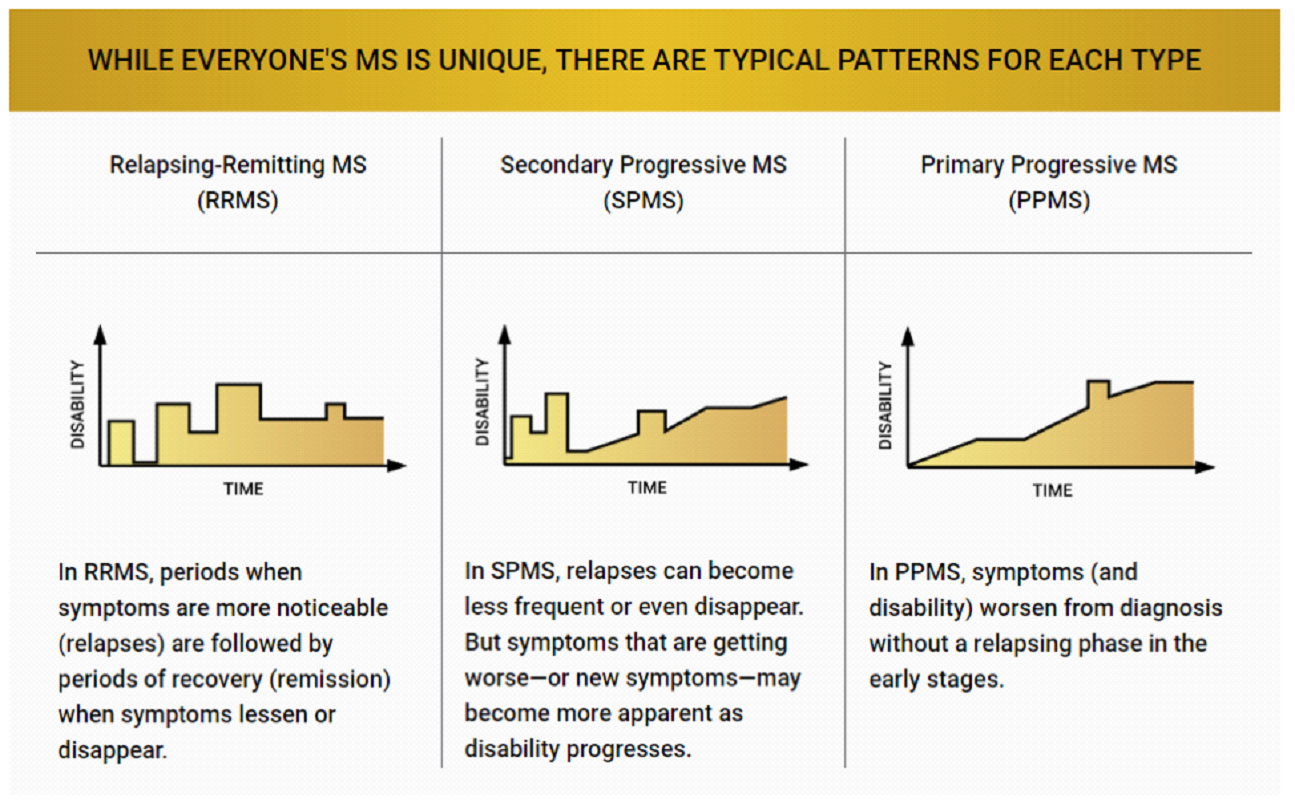MS progression and symptom changes
MS is a condition of many phases – learn about how it can evolve over time
It looks like you are using an older version of Internet Explorer which is not supported. We advise that you update your browser to the latest version of Microsoft Edge, or consider using other browsers such as Chrome, Firefox or Safari.
MS is a condition of many phases – learn about how it can evolve over time

If you or your loved one has been diagnosed with Multiple Sclerosis (MS), you’ll likely think of it as a condition that sometimes flares up and then (hopefully) quietens. Because this is the form of MS with which people are most commonly diagnosed, it’s often (and very easily) thought of as a continual cycle which will keep following this pattern1. In fact, MS changes over time, with symptoms appearing in different ways2.
Each person’s MS journey is unique, and that isn’t just because of the types of symptoms that can appear, but also because there are 3 different types of MS. All types of MS across the spectrum come with potentially differing symptoms but also different ways of progressing3.
The type of MS you have is usually determined by your:
⦁ Pattern of relapses (flare-ups or exacerbations of MS symptoms that can last a few days, weeks, or even months)
⦁ Rate of disability progression (the speed with which physical or cognitive tasks become more difficult over time)4

Image caption: MS Phases5
Most people are diagnosed with RRMS, which is the flare-based phase of MS3. However, being initially diagnosed with RRMS doesn’t mean that the categorization won’t change over time and that it won’t move into the next phase of the disease. It’s easiest to think of MS as a spectrum which people often move along throughout their life, and many will, over time, transition to SPMS6.
This change from RRMS to SPMS means a gradual transition to symptoms that are potentially getting worse and that can last even between relapses3. It may also mean increased disability, such as difficulty walking or fatigue-related problem7. SPMS is also associated with increased cognitive problems such as short-term memory issues or difficulty concentrating8.
The science behind the symptoms
So, we now know that there are three different phases of MS. But what’s actually happening inside the body?

Spotting changes in symptoms
Changes to multiple sclerosis (MS) symptoms can be subtle and over a long period of time, so may go unnoticed if you aren’t specifically looking out for them. Your symptoms may become more challenging and, while it might seem strange, you may even experience fewer relapses—not more. Experiencing fewer relapses can be a sign that your MS is changing and potentially transitioning to another phase of the disease12. It’s important to look out for changes in symptoms because different phases of MS require different treatments13. By monitoring changes and communicating anything unusual to your neurologist or nurse, you can get ahead of MS progression, working with them to find the right treatment, before small changes become big ones.
Finding it difficult to track symptom changes? Check out our handy tool.
References: